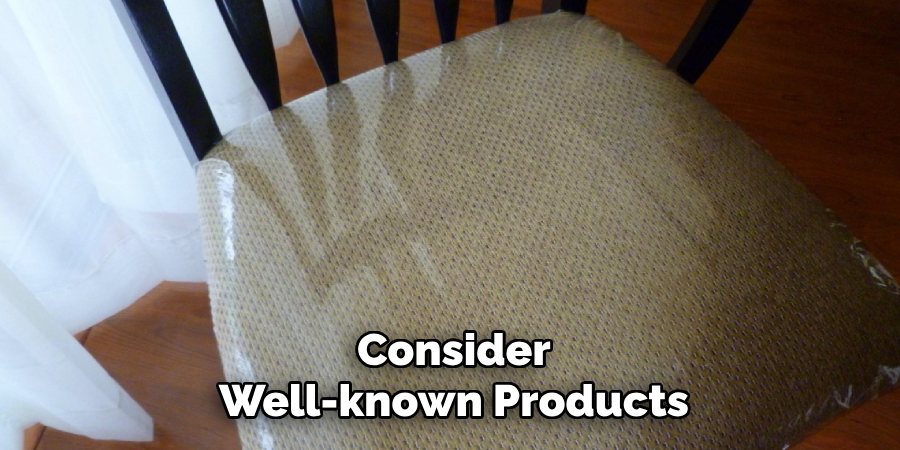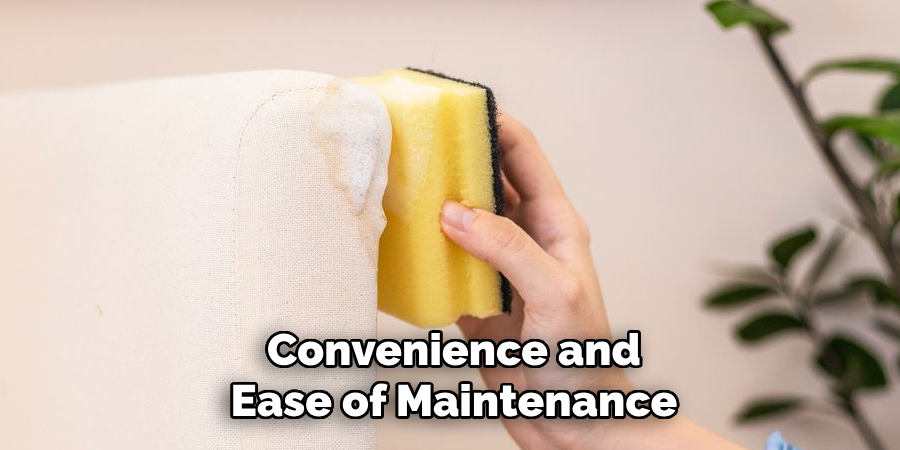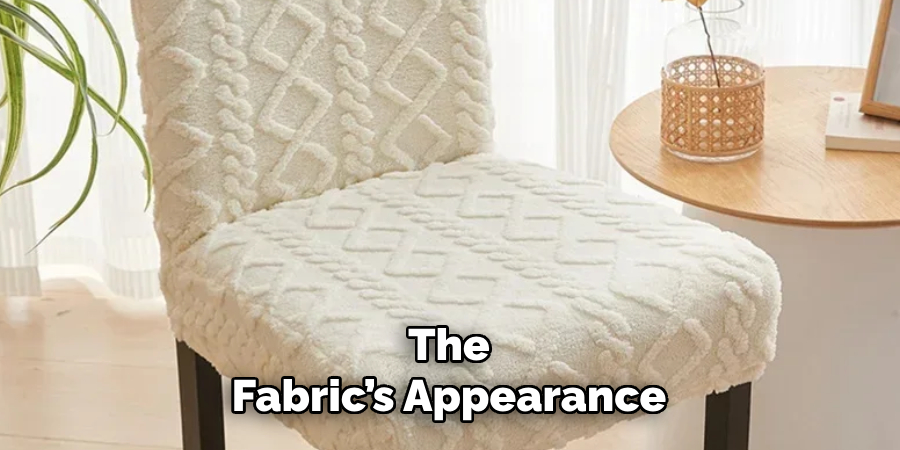Fabric dining chairs add a touch of elegance and comfort to any dining area but require special care to maintain their appearance and durability. Unlike leather or wooden surfaces, fabric is more susceptible to stains, spills, and general wear from daily use.

Whether it’s an unexpected spill during a family dinner or regular exposure to sunlight, various factors can degrade the quality of your fabric dining chairs over time. Therefore, understanding how to protect fabric dining chairs is crucial in preserving their look and functionality.
This article aims to provide practical tips and strategies for protecting fabric dining chairs. By offering comprehensive guidance on preventive measures, effective cleaning techniques, and essential maintenance practices, readers will learn how to extend the life of their furniture.
From utilizing protective covers to performing regular spot cleaning, this article covers a range of methods to ensure your fabric dining chairs remain in pristine condition for years to come.
Choosing the Right Fabric Protection
Fabric Protection Sprays:
Selecting the right fabric protection spray is crucial in safeguarding your dining chairs from spills and stains. A high-quality fabric protection spray is designed to create a barrier that repels liquids, preventing them from absorbing into the fabric. Consider well-known products such as Scotchgard Fabric & Upholstery Protector or Guardsman Fabric Defense for reliable protection. These sprays are specifically formulated to provide long-lasting defense against common household mishaps.

Application Process:
Before applying any fabric protection spray, it’s essential to test it on an inconspicuous area of the chair to ensure it doesn’t cause discoloration or damage. Once the suitability is confirmed, follow the manufacturer’s instructions carefully. Generally, this involves holding the spray can several inches away from the fabric and applying it in a light, even coat.
Be sure to cover all areas of the chair, including the sides and back, and allow the fabric to dry completely before using the chairs again. Proper application not only protects but also preserves the appearance of your dining chairs.
Reapplication:
To maintain the effectiveness of the fabric protection spray, it’s important to reapply it every six months or after cleaning the chairs. This helps ensure that the protective barrier remains intact and continues to repel liquids effectively over time. Regular reapplication will keep your fabric dining chairs looking their best and free from stains, prolonging their lifespan and appearance.
How to Protect Fabric Dining Chairs: Using Chair Covers
Benefits of Chair Covers:
- Chair covers provide a physical barrier against spills, stains, and everyday wear, making them an excellent protective measure.
- They are easily removable and washable, offering convenience and ease of maintenance.

Types of Chair Covers:
Slipcovers:
- Choose slipcovers that fit snugly over the chair, ensuring they cover the entire seat and backrest.
- Select from a variety of materials, such as cotton, polyester, or spandex, depending on your preference and décor.
Clear Vinyl Covers:
- For a more discreet option, use clear vinyl covers that protect the fabric while allowing its beauty to show through.
- Ensure the vinyl is thick enough to provide protection but flexible enough to fit comfortably over the chair.
Preventive Measures
Using Placemats and Tablecloths:
- Place tablecloths and placemats on the dining table to catch spills and crumbs before they reach the chairs. This simple yet effective measure helps maintain the cleanliness of your dining chairs.
- Choose materials that are easy to clean and maintain, such as vinyl or washable fabric. These options are not only practical but also come in a variety of styles to complement your dining room décor.
Encouraging Cleanliness:
- Establish rules to minimize eating and drinking away from the table to reduce the risk of spills. Keeping food and beverages confined to the dining area helps protect your fabric chairs from unnecessary stains and wear.
- Encourage family members and guests to use napkins and coasters to prevent direct contact between food, beverages, and the fabric. This not only protects the chairs but also promotes good dining habits.

Regular Maintenance:
- Vacuum the chairs regularly using a brush attachment to remove dust, crumbs, and debris. Regular vacuuming prevents the buildup of dirt that can lead to fabric degradation over time.
- Rotate the chairs periodically to ensure even wear and prevent certain chairs from becoming more worn than others. This practice helps to distribute usage evenly across all chairs, preserving their appearance and longevity.
Cleaning Spills and Stains
Immediate Action:
- Address spills as soon as they occur to prevent stains from setting into the fabric.
- Blot (do not rub) the spill with a clean, absorbent cloth or paper towel to soak up as much liquid as possible.
Cleaning Solutions:
Mild Soap and Water:
- Mix a small amount of mild dish soap with warm water.
- Dampen a clean cloth with the solution and gently blot the stained area.
- Rinse with a cloth dampened with plain water to remove any soap residue.
Vinegar Solution:
- For tougher stains, mix equal parts white vinegar and water.
- Apply the solution to the stain with a clean cloth, blotting gently.
- Rinse with plain water to remove any vinegar residue.
Commercial Cleaners:
- Use upholstery cleaners specifically designed for fabric, following the manufacturer’s instructions.
- Test the cleaner on an inconspicuous area first to ensure it doesn’t damage or discolor the fabric.
Drying:
- After cleaning, allow the fabric to air dry completely.
- Use a fan or open windows to expedite the drying process if necessary.
Protecting Against Sun Damage
Positioning Chairs Away from Direct Sunlight:
- Place fabric dining chairs in areas that receive minimal direct sunlight to prevent fading and deterioration. Prolonged exposure to sunlight can weaken fabric fibers and cause colours to fade, diminishing the chairs’ aesthetic appeal.
- Use window treatments, such as curtains, blinds, or UV-blocking film, to reduce the amount of sunlight entering the room. These treatments not only protect your dining chairs but also help to maintain a comfortable temperature in the dining area. Opt for heavy or blackout curtains for maximum protection or light-filtering shades for a balance of natural light and UV protection. Consider rotating chairs periodically to ensure even exposure and minimize the risk of damage in any one area.
Using Furniture Protectors:
- Apply UV-protective sprays designed for fabrics to shield them from sun damage. These sprays create a barrier that helps to block harmful UV rays, preserving the fabric’s integrity and color. Well-known products such as Scotchgard Sun & Water Shield can provide effective protection against sun exposure.
- Follow the manufacturer’s instructions for application and reapply as needed to maintain protection. Generally, this involves spraying the product evenly over clean, dry fabric from a distance of six to eight inches. Allow the fabric to dry completely before using the chairs. Regular reapplication, especially after cleaning or every six months, ensures continual protection against sun damage, prolonging the lifespan and appearance of your fabric dining chairs.
Long-Term Maintenance
Regular Vacuuming:
- Vacuum the chairs at least once a week to remove dust, dirt, and debris that can accumulate and cause wear.
- Use a vacuum with a soft brush attachment to avoid damaging the fabric. This helps to gently lift away dirt without pulling or stretching the material.
- Pay extra attention to seams and crevices where debris tends to build up. Regular vacuuming preserves the fabric’s appearance and prevents premature aging.

Periodic Deep Cleaning:
- Schedule professional upholstery cleaning once or twice a year to remove deep-seated dirt and refresh the fabric. Professional cleaners have the equipment and expertise to treat and rejuvenate your chairs thoroughly.
- Alternatively, use a steam cleaner designed for upholstery to clean the chairs thoroughly at home. Ensure to follow the manufacturer’s guidelines and spot-test a small area first to prevent any potential damage.
- Deep cleaning not only maintains the fabric’s cleanliness but also helps to eliminate allergens and bacteria that can accumulate over time.
Inspecting for Wear and Tear:
- Regularly inspect the chairs for signs of wear and tear, such as fraying, loose threads, or weakened fabric. Early detection of these issues can prevent them from worsening.
- Address minor repairs promptly to prevent further damage and extend the life of the chairs. Simple sewing kits or fabric adhesives can be useful for quick fixes at home.
- Consistent inspection and timely maintenance ensure your dining chairs remain in good condition and retain their aesthetic appeal for many years.
Conclusion
In conclusion, safeguarding your fabric dining chairs involves a combination of strategic methods that work synergistically to maintain their beauty and longevity. Fabric protection sprays add a barrier against spills and stains, while chair covers offer an additional layer of defense and are convenient to remove and clean. Preventive measures, such as using placemats and tablecloths and establishing cleanliness rules, significantly reduce the likelihood of damage.
Regular maintenance, including vacuuming and rotating the chairs, ensures even wear and keeps them looking fresh. Implementing these strategies will help preserve the aesthetic appeal and functionality of your dining chairs, contributing to a clean and inviting dining area. By being proactive, you’ll extend the lifespan of your furniture and make your dining space a more pleasant place to gather.
Consistent care and maintenance are paramount in learning how to protect fabric dining chairs. For particularly stubborn stains or extensive repairs, seeking professional assistance can ensure the best results, keeping your dining chairs in pristine condition for years to come.
